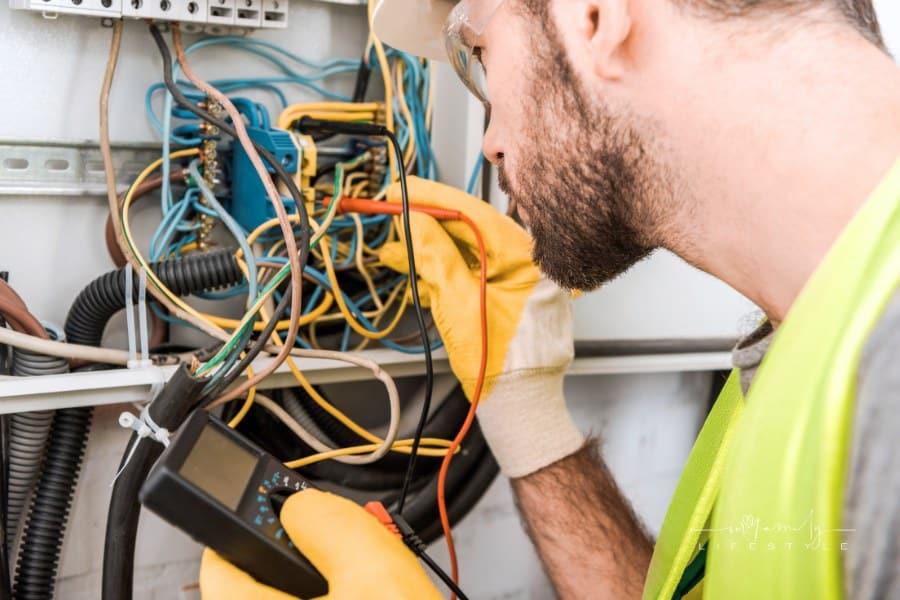In recent years, solar energy has become an increasingly popular choice for homeowners looking to save money on their electricity bills while contributing to a more sustainable future. The appeal of solar panels lies in their ability to harness the power of the sun, providing a renewable source of energy that can significantly reduce reliance on traditional power grids. However, deciding to install solar panels is not a simple decision. There are several factors to consider in order to ensure that you choose, install, and maintain a system that delivers maximum efficiency and savings.
This comprehensive guide will walk you through the entire process, from choosing the right system to installation and maintenance tips, and provide valuable insights on how solar panels can transform your home into an energy-efficient powerhouse.
1. Understanding Solar Energy and Its Benefits
Before diving into the details of choosing, installing, and maintaining solar panels, it's essential to understand how solar energy works and what benefits it brings to homeowners.
Solar energy is produced by converting sunlight into electricity using photovoltaic (PV) cells found in solar panels. These PV cells absorb sunlight and generate an electric current, which is then used to power your home. Solar panels are typically installed on the roof, where they receive maximum exposure to sunlight. Solar power systems can either be connected to the grid (grid-tied systems) or operate independently (off-grid systems).
Some key benefits of solar energy for residential homes include:
- Cost savings: Solar energy can significantly lower your monthly electricity bill. According to the U.S. Department of Energy, a typical residential solar system can save homeowners between $10,000 and $30,000 over 20 years, depending on the location and energy usage.
- Increased home value: Solar panels can increase the value of your home. A report from the National Renewable Energy Laboratory (NREL) found that homes with solar panels sold for 4.1% more than homes without them.
- Environmental impact: Solar energy is clean, renewable, and sustainable, making it an environmentally friendly alternative to fossil fuels.
Key Statistics:
- 1.7 million homes in the United States now have solar panels, according to a report by the Solar Energy Industries Association (SEIA).
- Solar power accounted for 39.2% of all new electricity generation in the U.S. in 2020, according to the SEIA.
- Homeowners with solar panels can expect to reduce their carbon footprint by about 100,000 pounds of CO2 over the lifespan of their solar system.
With these benefits in mind, let’s explore the key steps involved in choosing, installing, and maintaining your solar panels to ensure maximum efficiency and savings.
2. Choosing the Right Solar Panel System
Choosing the right solar system for your home depends on several factors. It's important to evaluate your energy needs, available space for installation, and local climate conditions.
Key Factors to Consider:
- Energy Consumption: The first step in selecting a solar system is to analyze your household's energy consumption. Review your electricity bills over the past year to understand how much energy you use on average. This will help you determine the size of the system you need.
- Roof Space and Orientation: Solar panels need plenty of sunlight to operate efficiently. The ideal roof for solar panels is south-facing (in the Northern Hemisphere) with minimal shading from trees or nearby buildings. If your roof is too small or shaded, you may need to consider ground-mounted solar panels.
- Solar Panel Efficiency: Solar panel efficiency refers to the amount of sunlight a panel can convert into electricity. While higher efficiency panels may cost more, they may be a better investment in situations where roof space is limited. Popular options include monocrystalline, polycrystalline, and thin-film panels. Monocrystalline panels are known for their high efficiency and long lifespan.
- Inverters: The inverter is the component that converts the DC electricity generated by your solar panels into AC electricity, which is used by household appliances. There are three main types of inverters: string inverters, microinverters, and power optimizers. Microinverters are typically the most efficient but come at a higher cost.
- Warranty and Lifespan: Most solar panels come with a 20-25 year warranty. Look for products from reputable manufacturers that provide good warranties, as this can offer peace of mind regarding the longevity and performance of your system.
Selecting the Right Solar Installer
Once you’ve narrowed down your choices in terms of system size and components, the next step is finding a qualified solar installer. When researching installers, consider:
- Certifications and Experience: Make sure the company is certified by organizations like the North American Board of Certified Energy Practitioners (NABCEP), which ensures that the installers meet industry standards.
- Customer Reviews: Reading reviews from previous customers can help you gauge the quality of the company’s work and customer service.
- Quotes and Financing Options: Get multiple quotes to compare pricing. Additionally, look into available financing options such as loans, leases, or power purchase agreements (PPAs), depending on what works best for your financial situation.
3. Installation of Solar Panels
The installation of solar panels is a detailed and technical process that should be carried out by a professional installer. The typical installation process involves the following steps:
1. Site Assessment
The installer will conduct a site assessment to evaluate your roof’s suitability for solar panels. This includes measuring roof dimensions, assessing shading, and determining the best panel placement.
2. Design and Permitting
Once the assessment is complete, the installer will design your system based on your energy needs and roof layout. They will also handle the necessary permits and paperwork required by local authorities.
3. Installation Day
On installation day, the solar panels will be mounted on the roof using racking systems. The inverter and other electrical components will also be installed at this time. The system will then be connected to your home’s electrical panel.
4. Inspection and Activation
After installation, the system will undergo a final inspection by local authorities to ensure compliance with building codes and safety standards. Once approved, the system is activated, and you can start generating solar power.
4. Maintaining Your Solar Panel System
Proper maintenance is crucial for ensuring that your solar system operates at maximum efficiency throughout its lifespan. Fortunately, solar panels require minimal maintenance compared to other home appliances.
Key Maintenance Tips:
- Regular Cleaning: Dust, dirt, and debris can reduce the efficiency of solar panels. Clean the panels periodically, especially in dusty or dry climates. This can often be done with water and a soft cloth or sponge.
- Check for Shading: Ensure that nearby trees or structures do not cast shadows on your solar panels, as shading can significantly decrease efficiency.
- Monitor System Performance: Use a solar monitoring system to track the performance of your panels. Most modern solar systems come with monitoring tools that allow you to see how much energy your system is generating and identify any issues.
- Professional Inspections: While most solar systems require little maintenance, it’s a good idea to have a professional inspect your system every few years to ensure everything is working properly.
5. Maximizing Savings and Efficiency
To get the most out of your solar panel system, it’s essential to understand how to maximize efficiency and savings. Here are a few tips to help you optimize your solar investment:
- Energy Storage Systems: Consider adding a battery storage system, like the Tesla Powerwall, to store excess energy generated during the day. This energy can then be used at night or during power outages, further reducing reliance on the grid.
- Net Metering: Many states offer net metering, which allows you to sell excess electricity back to the grid. This can help offset the cost of your system and provide a steady stream of savings.
- Energy Efficiency Upgrades: To get the most out of your solar system, make energy efficiency upgrades to your home, such as upgrading insulation, sealing leaks, and using energy-efficient appliances.
Conclusion
Investing in solar panels for your home is a smart decision that can provide long-term savings, increase your home’s value, and help protect the environment. By choosing the right system, working with experienced installers, and properly maintaining your system, you can maximize both efficiency and savings.
Whether you’re looking to lower your energy bills or reduce your carbon footprint, solar energy is a powerful tool that can help you achieve your goals. By staying informed and proactive, you can ensure that your investment in solar panels delivers the best results for years to come.





